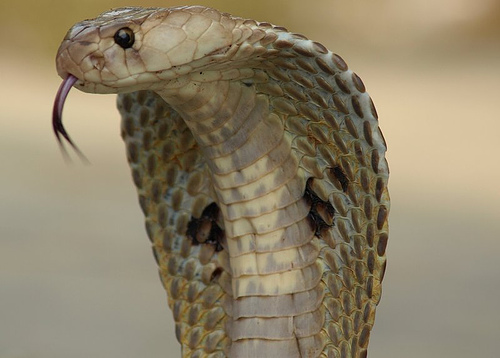Facts About Indian cobra
The Indian cobra, also known as the spectacled cobra, Asian cobra, or binocellate cobra, is a renowned snake species prevalent throughout India, Pakistan, Bangladesh, Sri Lanka, Nepal, and Bhutan. It is one of the "big four" snakes responsible for the majority of snakebites in India. Unlike the king cobra, the Indian cobra has a unique place in Indian culture and mythology and is frequently associated with snake charmers. It is also protected under the Indian Wildlife Protection Act.
Belonging to the genus Naja in the family Elapidae, the Indian cobra (Naja naja) was first documented by Carl Linnaeus in 1758. This snake is known by various local names throughout South Asia. It is a medium-sized serpent, easily identifiable by its hood, elliptical head, and distinct color patterns.
Indian cobras inhabit a variety of environments, including forests, plains, agricultural lands, and urban areas across India, Pakistan, Sri Lanka, Bangladesh, and southern Nepal. They often remain near water sources and prefer hiding in holes, tree hollows, and rock piles.
The Indian cobra lays its eggs between April and July. Its venom contains a potent blend of neurotoxins and cardiotoxins, which can cause paralysis and potentially lead to respiratory failure or cardiac arrest. Symptoms of envenomation can appear anywhere from 15 minutes to two hours after a bite. While untreated bites can be fatal, prompt medical intervention and administration of antivenom significantly reduce the risk of death.
In popular culture, the Indian cobra features prominently in Hindu mythology and literature, such as Rudyard Kipling's "Rikki-Tikki-Tavi." It is also associated with the practice of snake charming. The snake is both revered and feared, symbolizing various aspects of Hinduism. Historically, Indian cobras have appeared in heraldry and as symbols in the ancient princely states of India.
Ongoing efforts aim to improve antivenom, underscoring the Indian cobra's importance in the cultural and ecological fabric of South Asia.

 Afghanistan
Afghanistan